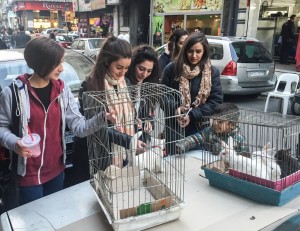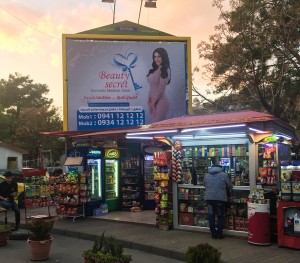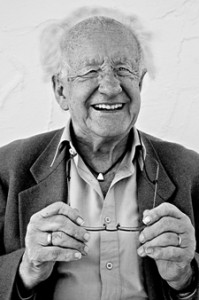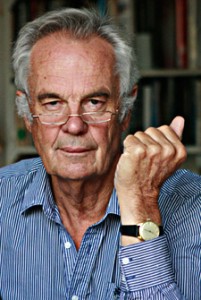Archive for December, 2016
Photo Story: Humans in liberated Aleppo
By Jan Oberg
Humans in liberated Aleppo by Jan Oberg on Exposure
Unique photos with text from Eastern Aleppo’s liberation, December 11-12, 2016.
Of some of the roughly 100,000 who were finally liberated, of the real humanitarians, the transport between East and Western Aleppo – and of the military, the children, street scenes, a bread queue and the devastation of this once so beautiful, bustling city.
Photos of heart-breaking suffering and sorrow in children’s eyes but also of smiles and hope.
Photos of the fellow human beings who did not fit the general Western political and media narrative since 2011 and therefore got no attention:
– the civilians who suffered for four years from the brutal occupation under Western- and allies-backed terror groups and from the Syrian-Russian military’s defence and liberation of the city.
This is my story.
The photos are genuine, not constructed by a marketing corporation.
This story is about our handling of Syria and its people – yes the lives of 23 million people should be central.
What you see here is the consequences of arms trade, sanctions and ignorant divisions of terribly complex societies into two groups – the good and the evil.
And it is a story about Western de facto support to terrorism since the US started history’s most counterproductive war: the war on terror that has only increased the problem 80 times.
We hate terrorists when they hit us in Europe – understandably.
But we support terrorists when they fight those “we” just don’t like.
Here are some of those – innocent fellow human beings – who pay the price of that cruel way of thinking.
I’m afraid the West has lost it. Are you?
Photo story: The destruction of Eastern Aleppo
By Jan Oberg
This is one of several stories I just have to tell.
You can see the original in large format here.
The destruction of Eastern Aleppo, Syria by Jan Oberg on Exposure
Subscribe to this Exposure page. Then you’ll automatically receive a mail when new photo (and text) stories are posted.
Grateful too if you share with others or on social media. We need help to spread a broader truth about the conflict in and around Syria.
Here a little more as background to the coming series:
TFF Photo Story
Lund, Sweden, December 27, 2016
Of course you have seen media images of the destruction in Syria. But not these taken in mid-December when Eastern Aleppo was liberated.
We live in a time when images – real and fake – influence perceptions more than ever.
My photos are real. Documentary. They reflect my role as witness on the spot at a time when only a handful of Westerners were present.
At a time, too, when all the mainstream media were conspicuously absent – as were the dual-purpose White Helmets who have delivered quite a few of the theatrical images from this war.
As a conflict and peace researcher and photographer I take pride in using not only analytical texts but also the medium of photography.
I am anyhow unable to describe just in words what I have seen.
Thanks to modern technology the small, smart, independent and truthful of this world can compete, to some extent, with the multi-billion dollar marketing and propaganda machines.
This is the first of a series to appear in weeks to come that will give you an impression of both life in Damascus, Eastern Aleppo’s destruction, the destruction in Aleppo’s old town, the human victims of this horrific war on Syria, the celebrations at the liberation of Aleppo etc.
I do not believe that pictures of wars and victims will, in and of themselves, lead people to think of peace. Hiroshima films have done little to eliminate nuclear weapons.
But in this particular case I do believe it is necessary to document just how big, systematic and unjustified the destruction of Aleppo has been – not only for those who built it and lived there over 7000 years but also to humanity, to all of us.
With what right did all the parties contribute to this utterly heartless and meaningless destruction?
How did it come to this surreal level of violence wrought upon a historic cultural and industrial city and its vast majority of innocent fellow human beings?
Will we ever learn – not only that war is stupid but also that this type of destruction cannot conveniently for some be blamed on one single side?
All parties who used violence have blood on their hands.
Aleppo’s blood.
This is the first of a series of stories that I must tell as a witness to an event that more intelligent and civilised generations in the future will have nothing but contempt for.
And if you ask me which side I am on, the answer is simple:
I’m on No government’s. No military’s. No leader’s.
I’m on the side of the tens of thousands of innocent, suffering Syrian citizens. Nobody deserves this!
I am on the side of the underlying, perfectly legitimate conflicts and not on the side of anybody’s violence.
And I do admit to have a particular problem with those – many – who interfered violently in the internal affairs of Syria and did only harm and no good.
Syria’s future is for the Syrians – all of them – to decide.
TFF PressInfo # 397: Syria’s destruction – When everybody thinks power and no one thinks peace
TFF Conflict and Peace Report Syria # 3
By Jan Oberg
In spring 2011 I was invited by then Danish foreign minister, Villy Søvndal, to be a keynote speaker at a conference in Copenhagen arranged by the ministry and the Danish Institute for International Studies (DIIS) with experts, then UN mediator Kofi Annan’s adviser, scholars, diplomats and, most importantly, a number of Syrian (opposition) politicians and civil society representatives.
The minister left the conference when he had opened it and, like most politicians today, obviously did not give priority to listen to the input of this high-level group present in the conference room.
I made these major points, trying to be as educative as I possibly could:
1) Look at conflicts as if they are problems to be solved – adhere to the peace research concept of the ABC conflict triangle and study A for Attitudes, B for Behaviour and C for the Contradiction/conflict that stands between people. (Cf. Johan Galtung). It’s a classical model that can be applied by virtually anyone.
2) Remember that there are always more than two parties to international conflicts – this is a kind of civil war but also part of the international wars – or aggressions – conducted since the assault on Afghanistan October 7, 2001.
3) Apply this model to another simple methods, namely that of Diagnosis, Prognosis and Treatment (DTP) – try to be conflict doctors instead of Realpoliticians. That is the only – only – way in which you can approach peace in the future and prevent a huge war with thousands of dead and much destruction.
So ABC and DPT – extremely simple for anyone who wants to understand conflict and help conflict-stricken peoples and countries to solve them and not just use conflicts as opportunities to promote one’s own more or less noble interests.
But he spoke of his next trip, I think to Paris, where the “Friends of Syria” – a group initiated by then-French President Sarkozy who was responsible for much of Libya’s destruction – were planning to meet. Intuitively I felt things were already going wrong there and then.
I then added Read the rest of this entry »
Impressions of Damascus and its amazing, kind people
TFF Conflict and Peace Report Syria # 2
I’ve only passed through Damascus once before, in 2002 on my way to Baghdad. What meets you today is a beautiful city with checkpoints all over the place, your car trunk will be opened and papers checked. Seemingly useless explosives detectors are used – useless because they don’t catch that many drivers here today have a revolver or hand-grenade under their seat.
But you’d probably be surprised, like I was, at how normal it otherwise feels. At the surface.
Traffic is intense, pollution thick, shops are filled with goods, I see fewer beggars here than in Lund, Sweden. People enjoy excellent food (I haven’t had such good meals for long) at restaurants with live music and entertain themselves at the omnipresent cafés.
As everywhere else in war zones, people whose lives have been shattered in many ways – and there are few here in Damascus who have not been hit one way or the other by the war – do their best to maintain some kind of normality.
I’ve seen it elsewhere such as in Sarajevo – the women in particular dress up elegantly and often sexily in the public space, hang out with friends, drink cappuccinos and check their mobiles incessantly to be and to appear as someone in control although life is close to unbearable. Human pride and determination comes out very strongly in war zones – as much, I would say, as human evil.
That said, for the less privileged life is extremely hard. Prices on many basic good have gone up 10x over the last 5 years. Salaries haven’t followed. A soldier gets about USD 50 a month, people working in offices perhaps US$ 70. Many citizens live on UN food packages.
In short, the same totally inhuman consequences of sanctions – the allegedly “soft” instrument – as in Iraq: only hitting innocent people, destroying the middle class and boosting the already rampant corruption. (More about this later when I know more).
What will surprise you is Read the rest of this entry »
TFF Peace and Conflict Mission to Syria # 1
By Jan Oberg
Damascus, Syria, December 9, 2016
I’m writing to you from war-torn Syria where the suffering of the people is beyond comprehension, heart-breaking.
The war in and on Syria has been started in spring 2011 – the underlying conflicts much much earlier.
What our media have shown us is snipers, bombings, killings, ruins, dead bodies and press conferences with Western politicians.
But did you “see” the underlying conflicts?
Get an understanding of what the problems standing between the parties are?
Did you get the impression that weapons is the only thing “they” understand?
Did you feel hopeless about it all? Confused? Depressed because of all the human suffering?
That peace is impossible?
If so it’s because we are missing a huge part of the picture. We need something else.
We need to switch from – repetitive and depressive – war and violence reporting to conflict and peace reporting.
We need a focus on issues, history and structures instead of appointing one side and one person as the problem.
We must supplement the focus on weapons and fighters and focus on human potentials.
We must scrap the garbage theory that peace is about good guys winning and bad ones losing.
We must listen to all the parties, not just out own politicians and media.
And we must look at common interests and ways out of the violence and ask: Who can do what for a better Syria in the future, a Syria with people at peace with each other and the world.
Are you interested in new ways of understanding conflicts?
Then – being in Syria until Christmas – I am available.
In two ways:
1. I will post short articles based upon these other approaches at the TFF Associates blog.
2. I have been here in beautiful, historical Damascus the last 5 days and will go to several places – Aleppo on Saturday.
I’m available to media and others who take interest in what is going on here in a conflict and peace perspective.
Contact:
janoberg@mac.com
Swedish iPhone +46 738 52 52 00
Syrian mobile +963 941 35 36 52
Facebook: https://www.facebook.com/janoberg.se – for updates, messaging and phone.
Skype: janoberg
A better world has less violence, less war
By Johan Galtung
The National Society of High School Scholars, Claes Nobel World Betterment Award
The Carter Center
3 Dec 2016
I am very grateful for the 2016 Claes Nobel World Betterment Award – Claes being the great grandnephew of Alfred – and to the NSHSS-National Society for High School Scholars, here at the Carter Center in Atlanta.
Let me start by praising you for your dedication to Education, focusing on the high school–in the middle, after K and grade school, before college and graduate school–on teachers and students, learning and doing research, treating them with respect, bestowing dignity.
Society has institutions, like Family, Work and Economy. Sports get too much attention, Education too little.
Politics is about leading and being led, Military is about killing not to be killed.
These two get you into trouble. I have heard this afternoon much about leading, leaders, led. Führer and Duce are German and Italian for leader, “duce” also from educare, educate. Hitler and Mussolini.
Be careful. This is vertical and hierarchical even without nazism and fascism. Today we want horizontal social landscapes, with people relating equitably and harmoniously, through shared memberships and networks, both horizontal and inclusive. For mutual inspiration.
As to killing: the USA killed more than 20 million in 37 countries only after 1945 WWII; and has intervened 248 times militarily in other countries since Thomas Jefferson started in Libya in 1801. 20 million killed means 200 million bereaved–family, friends, neighbors, colleagues. They do not take easily to this type of US leadership.
And less than a century earlier two groups of Americans practiced those very same skills and leadership on each other. The Civil War.
Such was history. How about solving the underlying conflicts?
Instead of the 1850 compromise of shame, “keep slavery but give up the confederacy”, how about “keep much autonomy, but give up slavery”; for a Community of American States, not U.S.A but C.A.S? And in 1924, how about dropping the Versailles Treaty, removing Hitler’s best card? Read the rest of this entry »
The rich get richer. So do the poor
By Jonathan Power
December 6th 2016
President-elect Donald Trump is about to make the American rich even richer with his plan to cut their taxes. A cause for shame. Nevertheless, the history of America is that poorer people have done better than is commonly thought over the last two centuries.
Today they have indoor plumbing, heating, electricity, smallpox and tuberculosis-free lives, adequate nutrition, much lower child and maternal mortality, doubled life expectancy, increasingly sophisticated medical attention, the availability of contraception, secondary level schooling for their children and a shot at university, buses, trains and bicycles, much less racial prejudice, longer retirement, a rising quality of the goods they buy, better working conditions and the vote.
Once these were luxuries that only the richer could experience. It has been shown by many studies that happiness increases fast as poorer people get better off but that beyond a certain point – an income of $15,000 per person per year- extra happiness increases very slowly. Read the rest of this entry »






